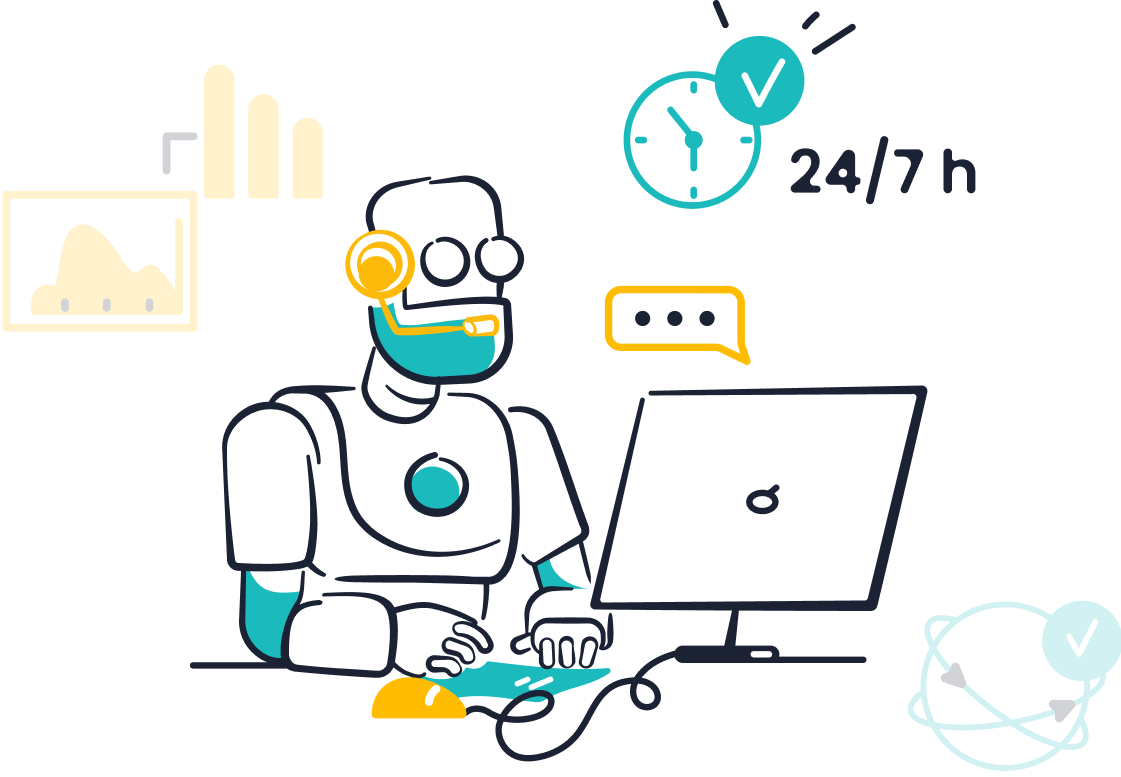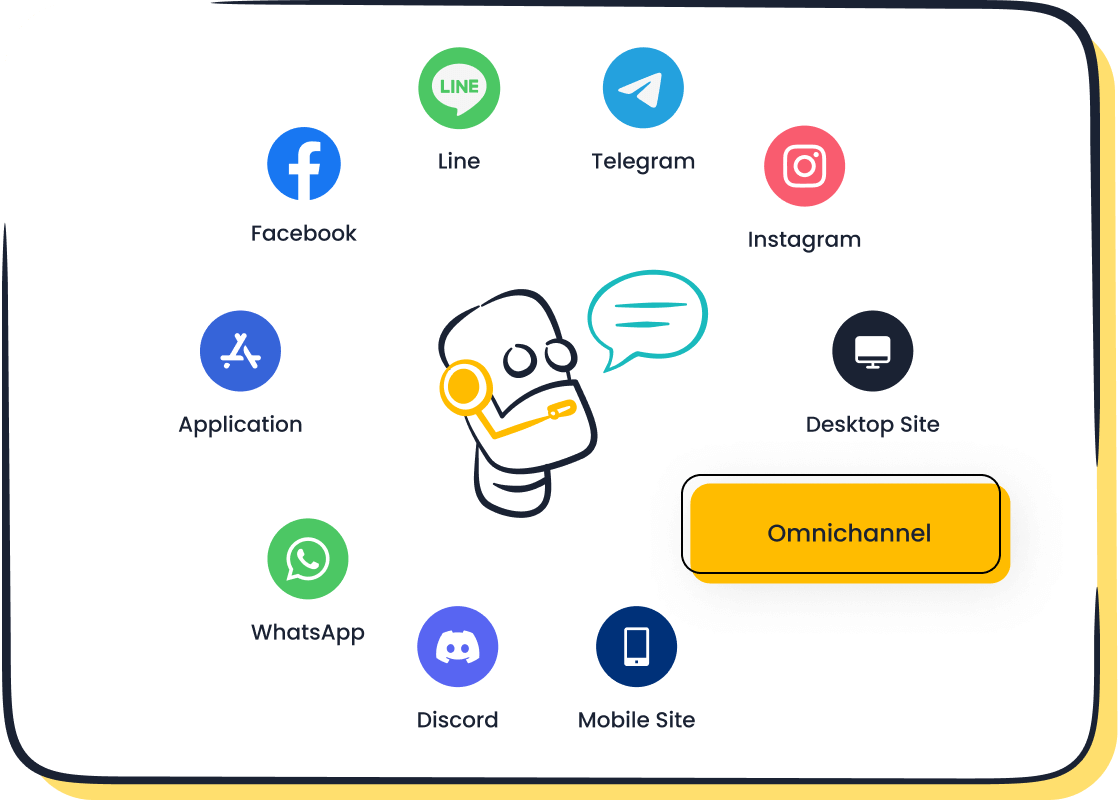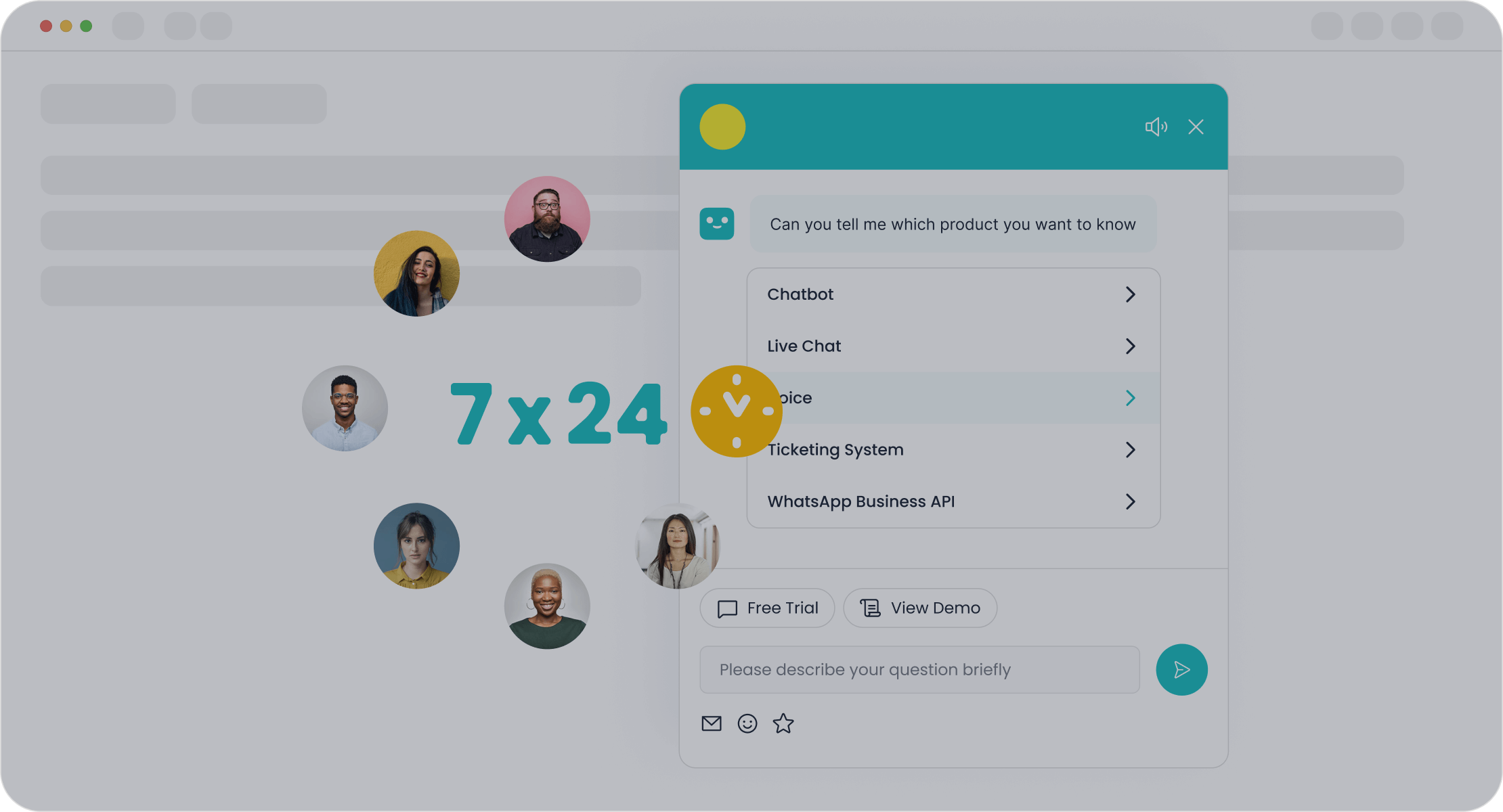Boost Customer Service Efficiency Using Smart Replies

Today’s customer service landscape demands speed and precision. Businesses rely on customer service automation and AI to streamline support, improve efficiency, and raise customer satisfaction. Smart replies and automated customer service now handle millions of interactions daily. Sobot AI stands out by offering an all-in-one solution that unifies automation across channels. Companies in retail, finance, and more trust Sobot to deliver seamless, omnichannel service. Adoption of AI-powered automation continues to rise, with 54% of organizations using conversational AI and 80% planning to implement generative AI by 2025.

Smart Replies in Customer Service

What Are Smart Replies
Smart replies are automated responses generated by AI to address common customer questions. These replies help businesses respond quickly and accurately. In customer service automation, smart replies play a key role by reducing the time agents spend on repetitive tasks. They allow support teams to focus on more complex issues.
Smart replies use AI to understand customer intent and provide instant answers. This technology improves both speed and consistency in customer interactions.

Sobot’s Chatbot uses smart replies to handle a wide range of queries. For example, when a customer asks about order status or return policies, the chatbot can deliver accurate information in seconds. This approach boosts efficiency and ensures customers receive timely support. According to Gartner, 80% of customer service organizations will use AI in some form by 2025. This trend highlights the growing importance of automation in customer service.
How Smart Replies Work
AI powers smart replies by analyzing customer messages and matching them with relevant answers from a knowledge base. The system uses natural language processing to understand different ways customers might ask the same question.
- The process starts when a customer sends a message.
- The AI scans the message for keywords and intent.
- It then selects the best automated response from its database.
- If the query is complex, the system can route it to a human agent.
Sobot’s Chatbot stands out because it supports multiple languages and operates 24/7. The chatbot’s automation helps businesses save up to 50% on agent costs and improves productivity by 70%. With AI-powered automation, companies can deliver consistent service across all channels. This level of customer service automation ensures that customers always get the help they need, any time of day.
Benefits of Customer Service Automation
Efficiency and Speed
Customer service automation transforms how businesses handle support. Automated customer service platforms like Sobot’s Chatbot respond to routine questions instantly. This reduces wait times and helps companies increase efficiency. Sobot’s omnichannel solution allows agents to manage all customer interactions in one place. As a result, teams resolve issues faster and handle more requests each day. Companies that use customer support automation often see a 30 to 40 percent reduction in response times. Automation also frees agents from repetitive tasks, so they can focus on complex problems. This leads to better use of resources and higher productivity.
Consistency and Accuracy
Automation ensures every customer receives the same high-quality service. Sobot’s Chatbot uses a knowledge base to deliver accurate answers, no matter the time or channel. Automated customer service reduces the risk of human error and keeps information up to date. With customer service automation, businesses maintain a consistent tone and message across all platforms. This builds trust and improves customer satisfaction. Sobot’s multilingual support also means customers get accurate help in their preferred language. Consistency in responses helps companies meet service standards and boost customer satisfaction scores.
24/7 Support
Automated customer service provides 24/7 availability, so customers always get help when they need it. Sobot’s Chatbot operates around the clock, handling inquiries without breaks. This level of availability leads to measurable results. Businesses experience a 25 to 45 percent decrease in support costs and up to 300 percent return on investment within two years. Customer satisfaction scores improve by 20 to 35 percent. Automation enables instant answers to common questions and real-time integration with order systems. Companies that offer 24/7 availability through customer support automation can increase efficiency and deliver a better experience for every customer.
Implementing Automated Customer Service with Sobot

Choosing the Right Tools
Selecting the right tools forms the foundation of successful customer service automation. Businesses should start by identifying tasks that benefit most from automation. Repetitive activities, such as routing tickets, answering FAQs, and managing order status inquiries, often consume valuable agent time. Sobot’s Chatbot and automated ticketing system address these needs by providing instant, AI-powered responses and efficient workflow management.
Sobot’s omnichannel solution unifies customer interactions across platforms like WhatsApp, SMS, and email. This integration ensures customers receive consistent support, regardless of the channel they choose. The AI-driven Chatbot operates 24/7, handling inquiries in multiple languages and reducing the need for additional agents. Companies using Sobot’s automated customer service tools often see a 70% boost in productivity and up to 50% savings on agent costs. These results demonstrate the value of investing in robust automation technology.
Tip: Focus on automating customer service tasks that are repetitive and time-consuming to maximize efficiency and free up agents for complex issues.
Integration Steps
Implementing automated customer service with Sobot involves several clear steps. First, businesses should map out their existing workflows and identify integration points for automation. Sobot’s solutions offer seamless integration with popular platforms like Salesforce and Shopify, making the process straightforward.
A typical integration process includes:
- Assessment: Review current customer service processes and select areas for automation, such as ticket routing or common inquiries.
- Configuration: Set up Sobot’s Chatbot and automated ticketing system using the intuitive point-and-click interface. No coding is required, which speeds up deployment.
- Channel Connection: Link all customer communication channels—voice, chat, email, and social media—into Sobot’s unified workspace.
- Knowledge Base Setup: Build or import a knowledge base from articles, PDFs, or text snippets. This step ensures the AI can deliver accurate smart replies.
- Testing: Run test scenarios to ensure the automation tools respond correctly and route complex queries to human agents when needed.
- Go Live: Launch the automated customer service system and monitor performance closely during the initial phase.
Sobot’s platform provides real-time analytics and reporting, allowing businesses to track key metrics and optimize their automation strategies. Regular audits and updates help maintain high functionality and responsiveness.
Training and Optimization
Training staff and optimizing automated customer service tools are essential for long-term success. Sobot recommends a structured approach to onboarding and continuous improvement:
- Identify which tasks to automate, focusing on repetitive activities like ticket routing and FAQs.
- Integrate automation tools with existing workflows, conducting regular audits to ensure smooth operation.
- Train customer service teams to work alongside AI systems, enabling agents to handle complex issues while automation manages routine tasks.
- Balance automation with human interaction by automating basic information delivery and reserving agents for high-value conversations.
- Use technologies such as IVR and chatbots to improve response times and increase capacity.
- Gather customer feedback to identify areas for improvement and adjust automation strategies accordingly.
- Monitor performance metrics and optimize automation efforts to maintain efficiency and customer satisfaction.
Sobot’s automated ticketing system and Chatbot provide detailed reporting and easy optimization features. Businesses can adjust workflows, update knowledge bases, and refine AI responses based on real-world data. This approach ensures that automated customer service continues to meet evolving customer needs and delivers measurable results.
Note: Continuous training and optimization help businesses adapt to changing customer expectations and maintain high service standards.
Best Practices for Customer Support Automation
Personalization
Personalization remains essential in customer support automation. Customers expect more than generic answers. They want responses that reflect their needs and history. Sobot’s AI-powered chatbot uses customer data to tailor replies. For example, when a returning customer asks about an order, the chatbot can reference past purchases. This approach builds trust and creates a seamless customer experience. Companies should use automation to greet customers by name and remember preferences. Personalization helps businesses stand out and keeps customers engaged.
Handling Complex Queries
Not every question fits a standard script. Customer support automation should recognize when a query needs human attention. Sobot’s platform uses AI to detect complex issues and route them to skilled agents. This process ensures customers receive accurate answers for unique problems. Agents can view the full conversation history in Sobot’s unified workspace, making it easier to resolve issues quickly. By balancing automation with human expertise, companies reduce escalation rates and improve satisfaction.
Continuous Improvement
Continuous improvement drives success in customer support automation. Sobot provides advanced reporting and optimization tools that help businesses track key metrics. Teams can monitor first response time, resolution time, CSAT scores, and escalation rates. Regular analysis of these KPIs highlights areas for enhancement.
| KPI Metric | Before Automation | After Automation | Improvement (%) |
|---|---|---|---|
| First Response Time | 15 minutes | 2 minutes | 86.7 |
| Resolution Time | 60 minutes | 30 minutes | 50 |
| CSAT Score | 75% | 85% | 13.3 |
| Resolution Rate | 60% | 80% | 33.3 |
| Escalation Rate | 20% | 5% | 75 |

Sobot’s platform allows teams to set baselines, run A/B tests, and adjust automation strategies based on real data. Regular feedback and optimization keep customer support automation effective and responsive. Companies that follow these best practices deliver faster, more reliable service and maintain high customer satisfaction.
Overcoming Challenges in Automated Customer Service
Avoiding Robotic Responses
Automated responses can sometimes feel impersonal. Customers may notice when replies lack empathy or sound too generic. Sobot’s AI-powered chatbot addresses this by using a knowledge base built from real customer interactions. The system adapts language and tone to match the brand’s voice. Businesses can customize automated responses to include customer names and order details. This approach helps create a more human-like experience. For example, Sobot’s chatbot can greet users by name and reference their recent purchases. Companies that personalize automated customer service see higher satisfaction scores and improved loyalty.
Tip: Regularly review and update automated responses to ensure they remain relevant and engaging.
Managing Customer Expectations
Clear communication sets the foundation for positive customer experiences. Automated customer service should inform users when they interact with AI or automation. Sobot’s platform provides transparency by indicating when a chatbot handles the conversation. Customers know what to expect and can request a human agent if needed. Setting response time expectations also helps. For instance, Sobot’s omnichannel solution displays estimated wait times for live support. This transparency reduces frustration and builds trust. According to Forrester, 63% of customers appreciate knowing when they are chatting with a bot.
Balancing Automation and Human Agents
A balanced approach ensures automation enhances, rather than replaces, human agents. Sobot’s customer service automation tools handle routine tasks, such as password resets or order tracking. Human agents focus on complex issues that require empathy and problem-solving. Best practices for balancing automation and human support include:
- Use automation to boost agent productivity, not to replace people.
- Train agents in soft skills and empathy for handling sensitive cases.
- Automate repetitive tasks while reserving complex queries for humans.
- Collect feedback to refine the balance between automated and human support.
- Provide ongoing training so agents can work effectively with AI systems.
- Keep a human-focused approach for issues needing critical thinking.
Sobot’s unified workspace allows seamless handoff between chatbot and agent, ensuring customers always receive the right level of support.
Case Studies and Industry Examples
OPPO’s Success Story
OPPO, a global leader in smart devices, faced high volumes of customer inquiries during shopping festivals. The company needed a way to manage spikes in demand while maintaining high customer satisfaction. OPPO chose Sobot’s Chatbot and omnichannel solution to automate responses and unify service channels. The chatbot resolved 83% of queries without human intervention. OPPO saw a 94% positive feedback rate and a 57% increase in repurchase rate. By integrating Sobot’s system, OPPO reduced knowledge base maintenance by 90%. Agents could focus on complex issues, while the chatbot handled routine questions. This approach improved both efficiency and customer satisfaction.
Applications in Retail and Finance
Retailers and financial service providers also benefit from Sobot’s solutions. In retail, Sobot’s omnichannel platform connects chat, email, and social media, giving customers fast answers wherever they reach out. Businesses see a 43% ticket deflection to AI, which means fewer tickets for agents and faster service for customers. In finance, Sobot’s multilingual chatbot supports clients in different regions without hiring extra staff. Automated workflows help manage sensitive requests, ensuring accuracy and compliance. Both industries report higher customer satisfaction and lower operational costs after adopting Sobot’s automation tools.
Lessons Learned
Key takeaways from Sobot’s case studies show how AI and omnichannel integration transform customer service:
- AI chatbots deliver 24/7 support, reducing first response times by over 30% and improving ticket resolution speed by more than 50%.
- Omnichannel integration ensures consistent experiences across chat, email, and messaging apps, supporting global customers in multiple languages.
- AI personalizes responses using customer data, which increases purchase rates and loyalty.
- AI acts as a co-pilot for agents, boosting their efficiency and job satisfaction.
- Predictive analytics allow proactive support, preventing issues before they escalate.
- Companies see improved operational efficiency, cost savings, and higher customer satisfaction across all channels.
To adopt smart replies and customer service automation, businesses should follow these steps:
- Assess current processes and set measurable goals.
- Choose scalable, user-friendly automation tools like Sobot’s Chatbot.
- Start with routine tasks, train teams, and roll out in phases.
- Balance automation with human support and monitor key metrics.
- Optimize workflows using real-time data for ongoing efficiency.
Sobot’s omnichannel solutions help companies deliver customer-centric service and adapt to changing needs. Explore Sobot’s platform to drive better results.
FAQ
What is customer service automation and how does it help businesses?
Customer service automation uses technology to handle support tasks. It speeds up responses, reduces costs, and improves accuracy. Sobot’s automated customer service tools help companies answer questions 24/7, leading to a 70% boost in productivity and up to 50% savings on agent costs.
How do smart replies improve customer support automation?
Smart replies use AI to deliver instant, accurate answers. Sobot’s Chatbot analyzes messages and responds in seconds. This reduces wait times and ensures customers get consistent information. Businesses using smart replies see higher satisfaction scores and faster ticket resolution.
Can Sobot’s automated customer service handle multiple languages?
Yes, Sobot’s customer service automation supports multiple languages. The AI-powered Chatbot interacts with customers in their preferred language. This feature helps global businesses provide seamless support and reach more customers without hiring extra staff.
What types of tasks can Sobot’s customer support automation manage?
Sobot’s automated customer service handles FAQs, order tracking, ticket routing, and appointment scheduling. The system manages repetitive tasks, freeing agents to focus on complex issues. Companies report a 30% to 40% reduction in response times after using Sobot’s solutions.
Is it easy to set up Sobot’s customer service automation tools?
Sobot’s platform features a point-and-click interface. No coding is required. Businesses can deploy smart replies and automated customer service in days. The system integrates with popular platforms like Salesforce and Shopify, making setup fast and simple.
For more details, visit Sobot’s official website.